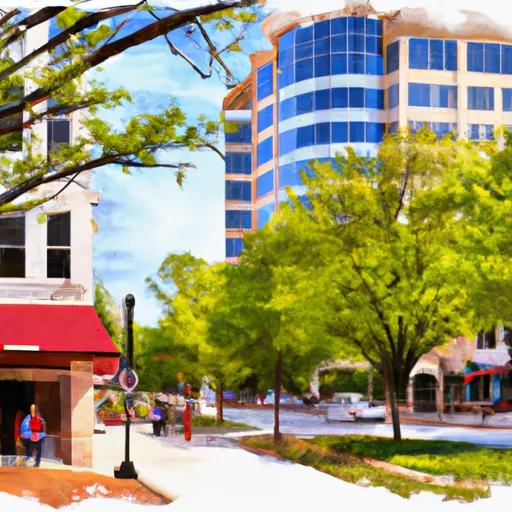-
 Snoflo Premium
Snoflo Premium
Get unlimited access to all our content
With no Ad interruptions! - Start Your Free Trial Login with existing account
Bethesda
Eden Index
Climate
8.3
•
Recreation
6.0
•
Community
8.4
•
Safeguard
7.5/10

Bethesda, Maryland is a suburban area located about 10 miles northwest of Washington, D.C. The climate in Bethesda is hot and humid in the summer, with temperatures often reaching the mid to upper 80s, and cold and snowy in the winter, with temperatures dropping to the low 30s. The area is prone to flooding due to its location near the Potomac River, which can cause issues with hydrology constituents. Despite this, Bethesda offers many outdoor recreation opportunities, including hiking trails in the nearby Great Falls National Park and the Cabin John Regional Park, which also features a large ice rink, playgrounds, and picnic areas. The Capital Crescent Trail is also a popular spot for biking and jogging, stretching over 11 miles from Bethesda to Washington, D.C.
What is the Eden Index?
The Snoflo Eden Index serves as a comprehensive rating system for regions, evaluating their desirability through a holistic assessment of climate health, outdoor recreation opportunities, and natural disaster risk, acknowledging the profound impact of these factors on livability and well-being.
Climate Health Indicator (CHI): 8.3
Bethesda receives approximately
1120mm of rain per year,
with humidity levels near 80%
and air temperatures averaging around
13°C.
Bethesda has a plant hardyness factor of
7, meaning
plants and agriculture in this region tend to thrive during the non-winter months.
By considering the ideal temperature range, reliable water supplies, clean air, and stable seasonal rain or snowpacks, the Climate Health Indicator (CHI) underscores the significance of a healthy climate as the foundation for quality living.
A healthy climate is paramount for ensuring a high quality of life and livability in a region, fostering both physical well-being and environmental harmony. This can be characterized by ideal temperatures, reliable access to water supplies, clean air, and consistent seasonal rain or snowpacks.
Weather Forecast
Streamflow Conditions
Potomac
Area Rivers
Potomac
Snowpack Depths
Potomac
Reservoir Storage Capacity
Potomac
Groundwater Levels
Recreational Opportunity Index (ROI): 6.0
The Recreational Opportunity Index (ROI) recognizes the value of outdoor recreational options, such as parks, hiking trails, camping sites, and fishing spots, while acknowledging that climate plays a pivotal role in ensuring the comfort and consistency of these experiences.
Access to outdoor recreational opportunities, encompassing activities such as parks, hiking, camping, and fishing, is crucial for overall well-being, and the climate plays a pivotal role in enabling and enhancing these experiences, ensuring that individuals can engage in nature-based activities comfortably and consistently.
Camping Areas
| Campground | Campsites | Reservations | Toilets | Showers | Elevation |
|---|---|---|---|---|---|
| Pohick Bay Regional Park | 150 | 126 ft | |||
| Greenbelt Park | 175 | 121 ft | |||
| Little Bennett Regional Park | 90 | 644 ft | |||
| Burke Lake Park | None | 327 ft | |||
| Louise F. Cosca Regional Park | 23 | 223 ft | |||
| Fort Belvoir Travel and RV Camp | 52 | 132 ft | |||
| Smallwood State Park | 15 | 16 ft |
Nearby Ski Areas
Catastrophe Safeguard Index (CSI):
The Catastrophe Safeguard Index (CSI) recognizes that natural disaster risk, encompassing floods, fires, hurricanes, and tornadoes, can drastically affect safety and the overall appeal of an area.
The level of natural disaster risk in a region significantly affects safety and the overall livability, with climate change amplifying these risks by potentially increasing the frequency and intensity of events like floods, fires, hurricanes, and tornadoes, thereby posing substantial challenges to community resilience and well-being.
Community Resilience Indicator (CRI): 8.4
The Community Resilience Indicator (CRI) recognizes that education, healthcare, and socioeconomics are crucial to the well-being of a region. The CRI acknowledges the profound impact of these elements on residents' overall quality of life. By evaluating educational resources, healthcare accessibility, and economic inclusivity, the index captures the essential aspects that contribute to a thriving community, fostering resident satisfaction, equity, and social cohesion.

